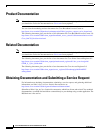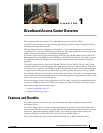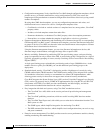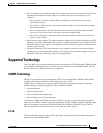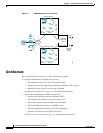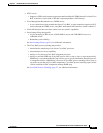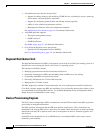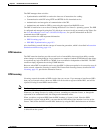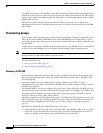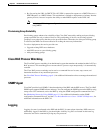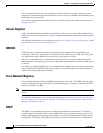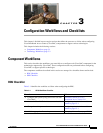
2-4
Cisco Broadband Access Center 3.8 Administrator Guide
OL-27172-01
Chapter 2 Broadband Access Center Architecture
Architecture
• An administrator user interface that provides:
–
Support for adding, deleting, and modifying CWMP devices; searching for devices, retrieving
device details, and running device operations.
–
Support for configuring global defaults and defining custom properties.
–
Ability to view additional performance statistics.
–
Management of firmware rules and configuration templates.
See Administrator User Interface, page 9-4, for additional information.
• An SNMP agent that supports:
–
Third-party management systems.
–
SNMP version v2.
–
SNMP Notification.
See SNMP Agent, page 2-7, for additional information.
• Cisco Network Registrar servers that provide:
–
Dynamic Host Configuration Protocol (DHCP).
See Cisco Network Registrar, page 2-8, for additional information.
Regional Distribution Unit
The Regional Distribution Unit (RDU) is the primary server in the Cisco BAC provisioning system. It is
installed on a server running the Solaris 10 or Linux 5.x operating system.
The functions of the RDU include:
• Managing preprovisioned and discovered data from devices.
• Generating instructions for DPEs and distributing them to DPE servers for caching.
• Cooperating with DPEs to keep them up to date.
• Processing API requests for all Cisco BAC functions.
• Managing the Cisco BAC system.
The RDU supports the addition of new technologies and services through an extensible architecture.
Cisco BAC currently supports one RDU per installation. Use of clustering software from Veritas or Sun
is recommended for providing RDU failover. Use of RAID (Redundant Array of Independent Disks)
shared storage is recommended in such a setup.
Device Provisioning Engines
The Device Provisioning Engine (DPE) communicates with the CPE on behalf of the RDU to perform
provisioning or management functions.
The RDU generates instructions that the DPE must perform on the device. These instructions are
distributed to the relevant DPE servers, where they are cached. These instructions are then used during
interactions with the CPE to perform tasks, such as configuration of devices, firmware upgrades, and
data retrieval.
Each DPE caches information for up to 500,000 devices, and multiple DPEs can be used to ensure
redundancy and scalability.



